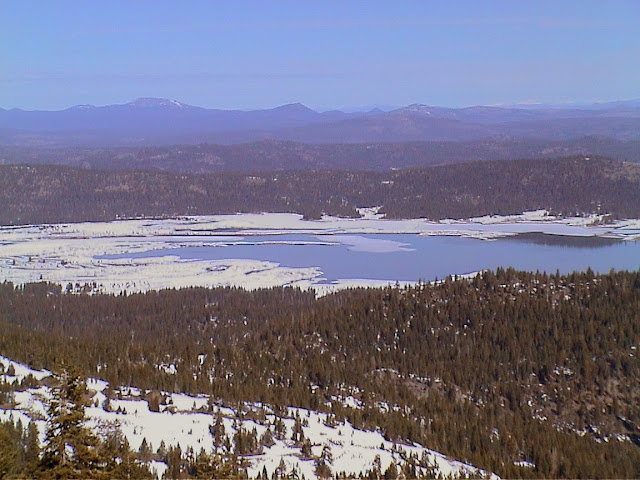Trout fishing in rivers and streams during winter is very
challenging due to the very cold water temps and available food for the fish.
The trout’s metabolism slows down with less feeding than that of summer, and
after the gorging of autumn they mostly get by from their body fat to help them
make it through the short dark days. Trout still need to eat and when flies are
presented properly they can lose their guard and inhale your offering. There
are only a few different kinds of aquatic insects hatching during this time of
year, unless you’re fishing a tail water fishery that has consistent water
temperatures. Fishing for winter trout can be productive though, and it sure
beats sitting at home in front of the television. Catching or not, you’re
really where us anglers want to be; in the great outdoors.
Dressing for conditions is absolutely necessary to be
comfortable, if you are suffering from being under dressed the day will be
ruined right from the get go. Dressing in layers under your waders and Gore Tex
shell is smart as you can peel them off if things warm up or add more if things
get brutally cold. A warm hat, neck gator, and gloves complete your outfit. I
can’t stress enough not to wear cotton; the cloth of death. Once cotton gets wet
it has no insulation value at all and can actually rob your body of heat.
Another good back up plan is to have a dry set of clothes in your vehicle in
case you take a fall in the water and end up soaked. If that ever happens, change
as quickly as possible, hypothermia is a serious threat to your safety!
For flies you’re going to want to use smaller patterns in
sizes 16-22 that are in tones of darker colors. Black, dark brown and dark olives
are great choices. Forget the flash and bling that does so well during the
other times of the year, simpler is better. Aquatic insects for this time of
year will include midges, little winter stoneflies, and tiny blue wing olive
mayflies. There will be more of a variety of bugs on tail waters, with possible
hatches of pale morning duns and caddis flies. Every day is different, it’s
best to observe what’s flying above the water, and take a quick sampling under
the rocks before you make your fly selection.
We down sized our flies and now we must do the same for our
tippets, often using 5-6x. To ensure you will not be breaking off fish, your
tippet must be 36 inches or longer to allow enough stretch to cushion the load
of hooking and fighting a big trout. When it comes to your rod on those frigid
days take the time to pop the ice out of your guides on a regular basis, I’ve
lost fish before when the line froze to my guides. You will surely break off
your quarry if the fish reacts and takes out line, there is simply nowhere for
the line to go – Snap! Be careful of getting your reel excessively wet or
dunking it in the water, they can freeze solid and you’ll be forced to go back
to your vehicle to thaw it out on the defroster.
Time of day is everything and usually dictates your success.
Sleep in and take your time getting to the river, you want to be on the water
during the warmest time of day where trout will be more active as will the
bugs. Winter time yields a lower sun in the sky which makes shadows longer,
shadows like your own body profile. You really need to be aware of your own
shadow and how it lays across the river. With low water conditions the fish are
already on edge, a moving shadow will surely spook them into deeper water, or
another run that is upstream or downstream. Plan your moves and slow down to
the trout’s rhythm, they are in no hurry and sometimes will barely move from
their holding spot.
In choosing your destination there are only a few options as
most rivers closed on November 15th. For the North central valley
the Big 3 come into play, the lower Sacramento, the Feather River in the low
flow section, and the Lower Yuba River. My favorite upper elevation rivers
would include the lower Truckee on the Nevada side, and the East Walker River
which also flows out to the state of Nevada. Always check your California DFW
and Nevada DFG regulations booklet before venturing out to insure the river you
choose is open for fishing, and noting any special regulations that are
required.
Winter fishing for trout can offer some of the most peaceful experiences. Picture a day with a light snowfall and windless conditions, that eerie quietness, and the feeling you get when you finally get a hook up. You release your catch and gaze across the stream taking it all in. Then it hits you; Snow, trout, and solitude can be a wonderful intimacy.













